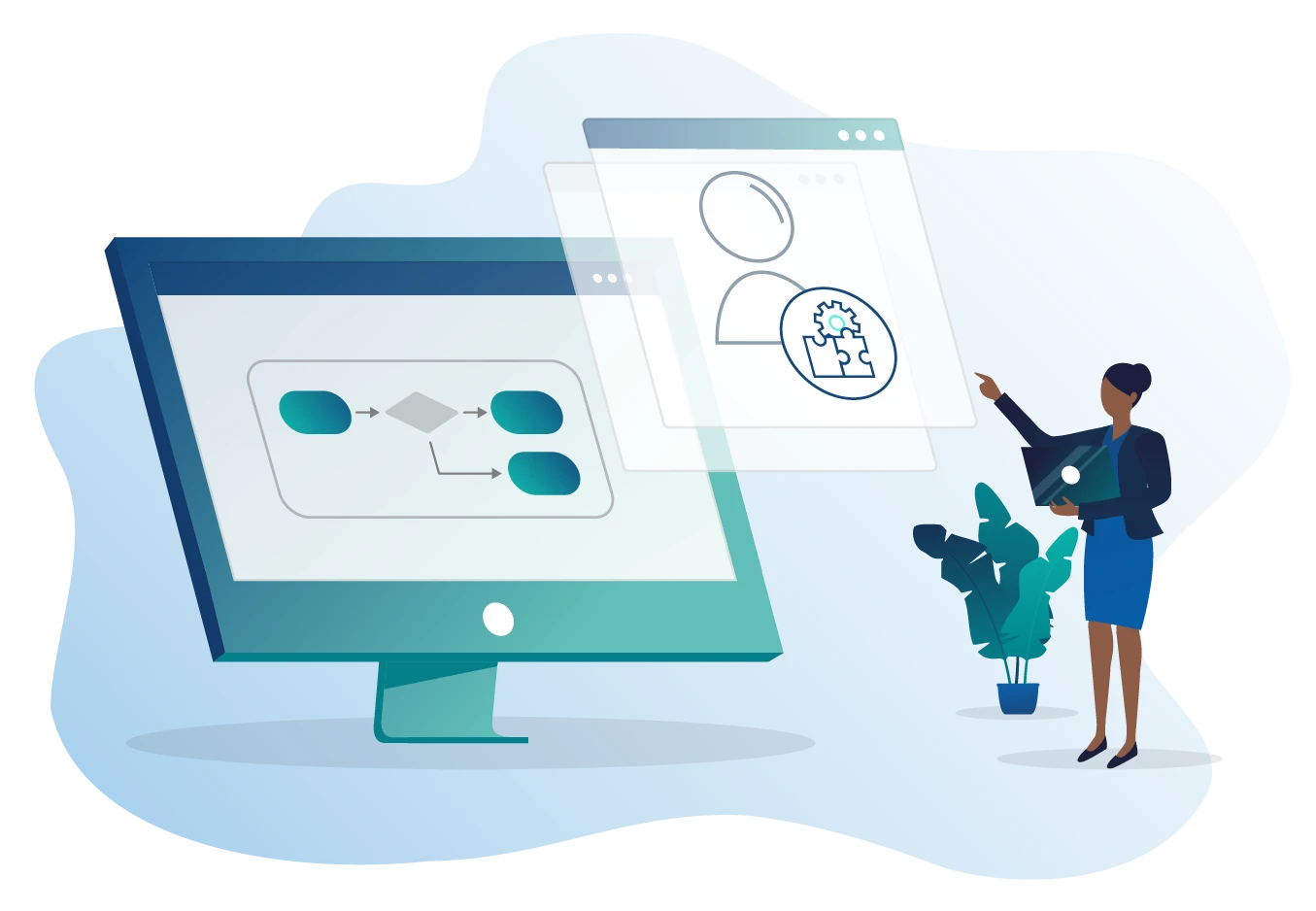BIC Process Design
Understand & Transform
Supercharge your business operations with the most intuitive AI-powered BPM software.
It seems that you come from a German speaking country. Here you can change the language
EnglishProcess management deals with the enterprise-wide control and optimization of processes and is therefore the sole responsibility of the management (e.g., business and department managers). Since management, especially in larger organizations, is not typically involved in operational tasks, effective process optimization requires the involvement of additional individuals and effective communication. In addition, a clear definition of responsibilities and tasks is essential. A well-thought-out role concept has proven to be indispensable in practice.

The process manager typically looks at the entire process flow from start to finish. However, it is not the process manager who decides on changes to the process, but rather the process owner. This role is often assigned to a department or business unit manager. When examining an end-to-end process, it becomes clear that multiple departments or areas are involved in the overall process. However, since a department manager is only responsible for the part of the process within his department, he cannot make decisions about optimizing other process parts. To realize the full potential of end-to-end process optimization, the process needs to be viewed and developed as a whole and across departmental boundaries. A lack of clear authorities and effective communication can complicate the decision-making process and quickly lead to confusion and frustration within the project. This costs valuable time and resources and may have a long-term negative impact on the success of the project.
Like an organizational chart, process roles in process management are arranged hierarchically. Their definitions and requirements may vary from company to company. It is important to define and communicate clear criteria in advance. For illustration purposes, here are some sample roles:
Chief Process Officer (CPO) assume the leading role in process management. The CPO is responsible for embedding process thinking in the company's strategic direction and deriving suitable methods for their area of responsibility. They are part of the top management level and establish a company-wide process-oriented approach.


Process Owners are responsible for the strategic control of a process according to the guidelines set by the CPO. They oversee process planning and ensure process efficiency.
Process Managers are responsible for the operational execution of the process and ensures its implementation based on the strategic guidance provided by the Process Owner.
Key responsibilities include:


Process Management Consultants support and guide all roles within process management and are often called upon as independent advisors when significant changes in BPM are being considered. As outsiders, they can assess the situation from a neutral point of view and help the company to develop and introduce methodological BPM elements, such as process analysis or optimization.
Process Participants execute each process step and ensure goal-oriented performance. Therefore, they need a basic understanding of process management and should be familiar with the specific requirements of process execution in their operational day to day business.
Some key responsibilities are:


Process Controllers support all leadership roles in process management and help to control goal-oriented processes in relation to operational and strategic requirements.
They are involved in tasks such as:
Process Auditors ensure the proper execution of processes and compliance with all established process requirements and identify weaknesses in execution. This promotes compliant process execution – even from a legal perspective.
Some of the key responsibilities include:

The RACI Matrix is a proven method to further specify and visualize roles and responsibilities in process management. It allows you to define, for each task in the process, who is responsible for performing the task (R), who is accountable (A), who needs to be consulted (C), and who should be informed (I). By linking process roles to the RACI matrix, you create a holistic view of your process management. Process roles define general and cross-departmental responsibilities, while the RACI Matrix enables detailed assignment of roles to specific tasks within sub-processes. Together, they provide a comprehensive solution for improving teamwork and coordination.
The intelligent tool for process modeling, analysis, optimization, communication, and control allows you to manage all process roles in one central location. In a repository, you define the various roles, specify their responsibilities and permissions, and assign tasks accordingly. With BIC Process Design you can create up-to-date and consistent role profiles, effectively eliminating uncertainty and inconsistencies in role definitions.

Co-Founder and Key Account Manager
Marc brings more than 20 years of experience in BPM, IT management, and digital transformation. As a Key Account Manager, he supports international corporations around the globe in advancing their process excellence and business transformation initiatives. With his combination of technological know-how and professional expertise, he has led thousands of projects worldwide — ranging from Fortune 500 companies to SMEs — to achieve top performance in process optimization and operational excellence.
We have the information you need to unleash your full process potential. Take a look at our resources and start improving your business performance today.